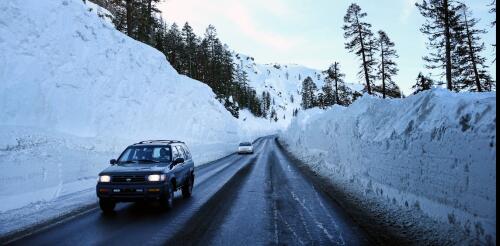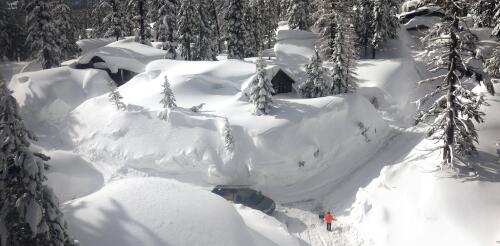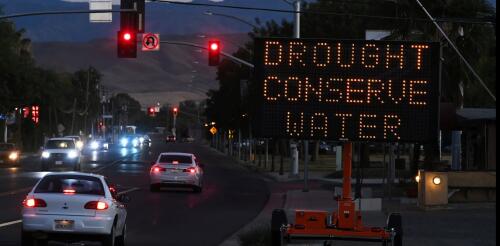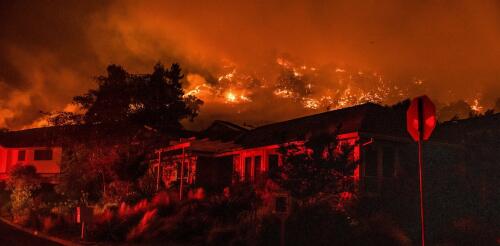California
After three years of extreme drought, the Western U.S. is finally getting a break. Mountain ranges are covered in deep snow, and water reservoirs in many areas are filling up following a series of atmospheric rivers that brought record rain and snowfall to large parts of the region. Many people are looking at the snow and water levels and asking: Is the drought finally over? There is a lot of nuance to the answer. Where you are in the West and how you define “drought” make a difference. As a drought and water researcher at the Desert Research Institute’s Western Regional Climate Center, here’s what I’m seeing. How fast each region recovers will vary The winter of 2023 has made a big dent in improving the drought and potentially eliminating the water shortage problems of the last few summers. I say “potentially” because in many areas, a lot of the impacts of drought tend to show up in summer, once the winter rain and snow stop and the...
Your child could go to gym class on Monday morning and play soccer on a field that was sprayed over the weekend with 2,4-D, a toxic weedkiller that has been investigated as possibly causing cancer. Alternatively, the school grounds may have been treated with a lower-toxicity weedkiller. Or maybe the grounds were managed with safe, nontoxic products and techniques. Which of these scenarios applies depends in large part on your state’s laws and regulations today – more so than federal regulations. For example, Texas requires all school districts to adopt an integrated pest management program for school buildings; IPM prioritizes nonchemical pest control methods and includes some protections regarding spraying of grounds. Massachusetts also restricts pesticide use on school grounds. Illinois requires IPM for school buildings only if economically feasible. States also vary greatly in the education and technical assistance they provide to implement these practices....
Another round of powerful atmospheric rivers is hitting California, following storms in January and February 2023 that dumped record amounts of snow. This time, the storms are warmer, and they are triggering flood warnings as they bring rain higher into the mountains – on top of the snowpack. Professor Keith Musselman, who studies water and climate change at the University of Colorado’s Institute of Arctic and Alpine Research, explained the complex risks rain on snow creates and how they might change in a warming climate. What happens when rain falls on snowpack? For much of the United States, storms with heavy rainfall can coincide with seasonal snow cover. When that happens, the resulting runoff of water can be much greater than what is produced from rain or snowmelt alone. The combination has resulted in some of the nation’s most destructive and costly floods, including the 1996 Midwest floods and the 2017 flood that damaged California’s Oroville Dam....
Even after heavy snow and rainfall in January, western states still face an ongoing drought risk that is likely to grow worse thanks to climate change. A whopping snowpack is good news, but it doesn’t reduce the need for long-term planning. Confronted with a shrinking supply of water for agriculture, industry and residential uses, water agencies have pursued different strategies to encourage water conservation. They have nudged customers to reduce water use, limited outdoor watering and offered incentives to rip out lawns. On the supply side, there are innovative ideas about using heavy rains to recharge groundwater. Basic economics teaches us that a higher price for water would encourage conservation. Up until now, however, concerns about harming low-income households have limited discussions about raising water prices to reduce demand. We know that it’s hard to pay more for essential goods such as food, energy and water, especially for lower-income households. R...
It can be tempting to think that the recent wildfire disasters in communities across the West were unlucky, one-off events, but evidence is accumulating that points to a trend. In a new study, we found a 246% increase in the number of homes and structures destroyed by wildfires in the contiguous Western U.S. between the past two decades, 1999-2009 and 2010-2020. This trend is strongly influenced by major fires in 2017, 2018 and 2020, including destructive fires in Paradise and Santa Rosa, California, and in Colorado, Oregon and Washington. In fact, in nearly every Western state, more homes and buildings were destroyed by wildfire over the past decade than the decade before, revealing increasing vulnerability to wildfire disasters. What explains the increasing home and structure loss? Surprisingly, it’s not just the trend of burning more area, or simply more homes being built where fires historically burned. While those trends play a role, increasing home and structure l...




